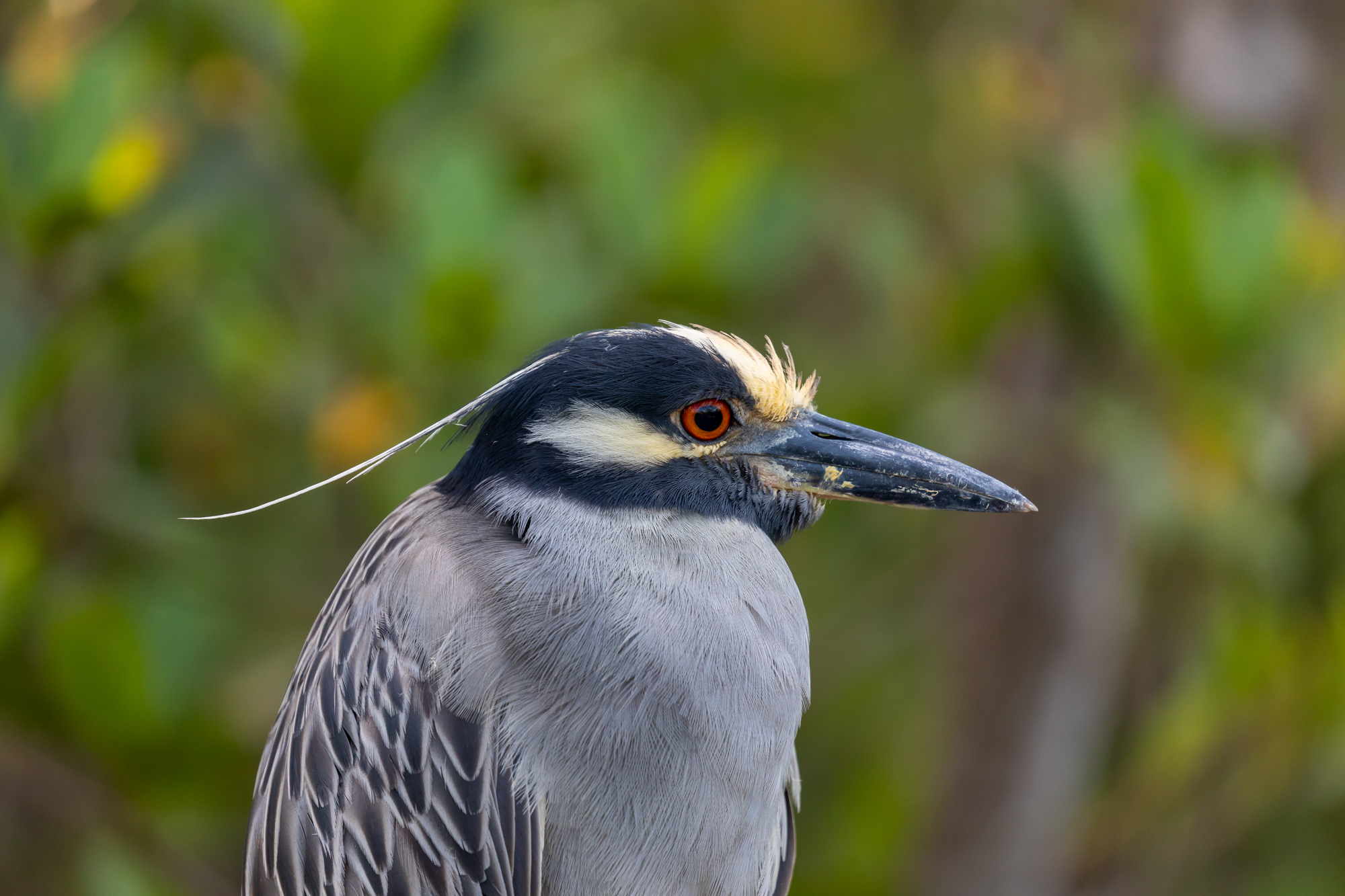Yellow-Crowned Night Heron (Nyctanassa violacea)
category: GENERALURBAN BIRD CALL
.jpeg)
Yellow-Crowned Night Herons can be found in every borough. Photo: Matthew Paulson/CC.
Yellow-Crowned Night Heron (Nyctanassa violacea)
Kellye Rosenheim | September 16, 2024
One of the more striking wading birds in the New York City area is Nyctanassa violacea, the “violet night queen.” Indeed, one is struck by the regal bearing of this colorful shoreline hunter.
The Yellow-crowned Night Heron’s sexes look alike, and you can identify them by the black head, white cheek patch, white or yellow crown, and gray overall body plumage, sometimes appearing slightly bluish-violet. During the breeding season, both sexes grow long white head plumes and their yellowish-green legs turn from coral pink to red.
The YCNH, as NYC Bird Alliance (formerly NYC Audubon) conservationists call them, can be found in every borough, usually in coastal habitats near their favorite food: crustaceans. That’s no surprise when you look at the bird’s sturdy bill. You’ll see them slowly stalking their prey, and when a crab is caught, they eat it whole or, if larger, dismember it, eating first the body, then the legs.
These birds are migratory and only one of six subspecies to venture out of the Caribbean each year to breed. You can spot their often-communal nests in urban or suburban street trees. This year, a science research study in conjunction with NYC Bird Alliance’s community engagement program, NYCHA in Nature, to the Hammel and Redfern housing campuses in the Rockaways found more than 70 nests in the latter location.
Dr. Dustin Partridge, director of conservation and science at NYC Bird Alliance, leads the organization’s annual Harbor Herons surveys to study the nesting populations of these birds in New York Harbor.
“Because their diet consists primarily of marine crustaceans, Yellow-crowned Night Herons are important indicators of the health of New York Harbor, and they can be an early bellwether of environmental threats to humans. Due to their ability to shift nesting locations, their populations can be notoriously difficult to track. However, we know that their close relative, the Black-crowned Night Heron, has experienced dramatic declines in New York Harbor in the last two decades, and Yellow-crowns may be following a similar trend.”
In fact, the Yellow-crown is so closely related to the Black-crown that their young look remarkably similar. Both youngsters sport mottled brown and white plumage and have a similar silhouette, but one can distinguish them by their bills: Yellow-crowns’ bills are black, Black-crowns’ bills are yellow.


